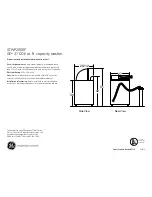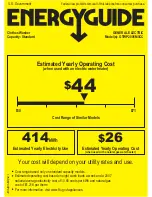
v
In case of damage and improper use of the battery, vapours may be
emitted. The battery can set alight or explode.
Ensure the area is well ventilated and seek medical attention should you expe-
rience any adverse effects. The vapours may irritate the respiratory system.
v
If used incorrectly or if the battery is damaged, flammable liquid may
be ejected from the battery. Contact with this liquid should be avoid-
ed. If contact accidentally occurs, rinse off with water. If the liquid
comes into contact with your eyes, seek additional medical attention.
Liquid ejected from the battery may cause irritation or burns.
v
If the battery is damaged liquid can be ejected and cover nearby sur-
faces. Check affected parts.
Clean these parts or change them if necessary.
v
Do not short-circuit the battery pack. When the battery pack is not in
use, keep it away from other metal objects, like paper clips, coins,
keys, nails, screws or other small metal objects, that can make a con-
nection from one terminal to another.
Shorting the battery terminals together may cause burns or a fire.
v
The battery can be damaged by pointed objects such as nails or
screwdrivers or by force applied externally.
An internal short circuit may occur, causing the battery to burn, smoke,
explode or overheat.
v
Never service damaged battery packs.
Service of battery packs should only be performed by the manufacturer or
authorized service providers.
v
Protect the battery against heat, e. g. against continuous intense
sunlight, fire, dirt, water and moisture.
There is a risk of explosion and short-circuiting.
v
Only operate and store the battery at an ambient temperature
between – 20 °C and + 50 °C.
Do not leave the battery in your car in the summer, for example.
At temperatures of < 0 °C some devices may experience a loss of power.
v
Only charge the battery at an ambient temperature which is between
0 °C and + 45 °C.
Charging outside of this temperature range can increase the risk of damage to
the battery and pose a fire hazard.
Electrical safety
DANGER! Cardiac arrest!
This product makes an electromagnetic field while it operates. This field
may under some conditions interfere with active or passive medical
implants. To decrease the risk of conditions that can possibly injure or
kill, we recommend persons with medical implants to speak with their
physician and the medical implant manufacturer before you operate the
product.
Disconnect the battery in case of emergency.
The washer cannot be used with older batteries (product name PBA 18V..-V.)
Protect the battery contacts from moisture.
Personal safety
DANGER! Risk of suffocation!
Small parts can be easily swallowed. There is also a risk that the poly-
bag can suffocate toddlers. Keep toddlers away when you assemble the
product.
Check the product before usage.
Do not use a damaged product especially if there are cracks on the housing.
Do not immerse the product.
Operate the machine only in daylight or in good artificial light
DANGER! Personal injury and damage to the product!
v
Let the pressure out of the system before disconnecting the water
hose.
Always wear eye protection.
No using in wet condition. Not using in rain.
Keep all nuts, bolts and screws tight to be sure the product is in a safe working
condition.
Do not disassemble the product further than the delivery status.
Warning! When wearing hearing protection, and due to the noise produced
by the product, the operator may not notice persons approaching.
While operation and transport pay special attention to the hazard for other
people.
Stay alert, watch what you are doing and use common sense when operating
a power tool.
Do not use a power tool while you are tired or under the influence of drugs,
alcohol or medication.
A moment of inattention while operating power tools may result in serious
personal injury.
Only use the product with clear water. Do not add any additives to the water.
Impurities in the water can damage the pump and accessories.
Do not use or store the product in frost.
Aim the cleaner away from yourself and others.
2. ASSEMBLY
DANGER! Risk of injury!
Eye injury and personal injury caused by the water jet.
v
Remove the battery before you assemble the product.
To assemble the attachments and the suction hose
[ Fig. A1 / A2 / A3 ]:
DANGER!
v
The product may only be used when the suction hose and the
spray lance are completely assembled.
The following spray lances are in the scope of delivery:
– Short spray lance (ca. 6 cm)
– Long spray lance (ca. 35 cm)
The following attachments are in the scope of delivery:
– 0° nozzle
– 15° nozzle
– 40° nozzle
– Detergent tank (Plus)
1. Push the desired spray lance
(1)
into the lance holder
(2)
and turn it
clockwise until the connection engages noticeably (bayonet lock).
2. Pull the ring
(3)
of the quick coupling backwards, push the desired
attachment
(4)
on the spray lance
(1)
and release the ring
(3)
again.
The coupling is fully engaged when the ring is again at the front
(the silver retaining spring and the silver balls are no longer visible).
3. Turn the attachment
(4)
for the desired spraying angle.
The two unused nozzles
(4)
can be placed on the holders
(5)
.
4. Connect the suction hose
(6)
to the connection
(7)
.
To assemble the detergent tank (Plus) [ Fig. A4 ]:
For cleaning with detergent, the detergent tank can be attached to the
front of the short lance
(1)
.
1. Fill the detergent container
(8)
with detergent.
2. Pull the ring
(3)
of the quick coupling backwards, place the detergent
tank
(8)
on the short spray lance
(1)
and release the ring
(3)
again.
The coupling is fully engaged when the ring is again at the front
(the silver retaining spring and the silver balls are no longer visible).
3. Dose the amount of detergent with the dosing wheel
(9)
.
To provide the water supply:
You can enable the water supply via the water bag (Plus),
via a water tank (pond, rain barrel, etc.) or via a water tap.
Water supply via the water bag (Plus) [ Fig. A5 ]:
1. Carry the full water bag by the handle and place it on a firm surface
when in use.
2. Unscrew the cap
(10)
.
3. Fill the water bag
(11)
with clear tap water.
4. Remove the suction filter
(12)
.
5. Move the float ball
(13)
upwards.
6. Immerse the suction hose
(6)
in the water bag
(11)
.
7. Attach the hose
(6)
to the water bag
(11)
.with the plastic clip
(14)
.
The hose
(6)
must be completely immersed in the water.
Water supply via a water tank [ Fig. A6 ]:
1. Immerse the suction filter
(12)
of the suction hose
(6)
in the water tank.
The suction filter
(12)
must be completely immersed in the water.
2. Move the float ball
(13)
in such a way that the suction filter
(12)
does not
touch the ground.
This prevents the suction filter from clogging.
3. Attach the hose
(6)
to the water tank with the plastic clip
(14)
.
Note:
When water is supplied via a water tank, the suction filter
(12)
must be
used.
Only clear fresh water may be used.
5
Page 2 width 2 mm less: 208 mm
EC20VLi-20.960.01.indd 5
28.09.20 11:08




























